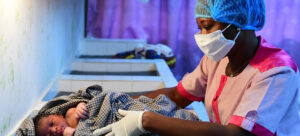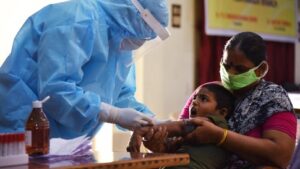While all children are capable of getting the virus that causes COVID-19, they don’t become sick as often as adults.
Children also rarely experience severe illness with COVID-19. Despite many large outbreaks around the world, very few children have died.
According to the U.S. Centers for Disease Control and Prevention (CDC), among nearly 150,000 cases of COVID-19 in the U.S. between Feb. 12 and April 2, only about 2,500, or 1.7%, were in children.
This is similar to what has been reported in other countries, such as China and Italy, that have had large outbreaks. Hospitalization rates for children have been much lower than for adults.
In cameroon, it is rare to hear that a child is declared COVID-19 positive.
Although rare, children under age 1 (infants) are at higher risk of severe illness with COVID-19.
This is likely due to their immature immune systems and smaller airways, which make them more likely to develop breathing issues with respiratory virus infections.
Some experts suggest that children might not be as severely affected by COVID-19 because there are other coronaviruses that spread in the community and cause diseases such as the common cold.
Since children often get colds, they might have antibodies that provide them with some protection against COVID-19.
It’s also possible that children’s immune systems interact with the virus differently than do adults’ immune systems.
Some adults are getting sick because their immune systems seem to overreact to the virus, causing more damage to their bodies.
This may be less likely to happen in children.
In addition, children are less likely to have an existing chronic medical health condition, such as heart disease, high blood pressure or diabetes.
Adults who have these conditions are at higher risk of serious illness with COVID-19. It’s not yet clear how children who have chronic medical conditions or special needs are affected by COVID-19.
A study of more than 2,100 children with suspected or confirmed COVID-19 in China between late December and early February showed that just under 11% of infants had severe or critical illness.
In comparison, rates of severe or critical illness were about 7% for children ages 1 to 5, 4% for those 6 to 10, 4% for those 11 to 15 and 3% for those 16 and older.
Newborns can become infected with the virus that causes COVID-19 during childbirth or by exposure to sick caregivers after delivery.

Special care for newborns born to women who have confirmed or suspected COVID-19 is recommended.
This might include temporarily separating the mother and the newborn to decrease the risk of infecting the baby, monitoring the baby for signs of infection, and, if supplies are available, testing the newborn for COVID-19.
Children’s COVID-19 symptoms
While children and adults experience similar symptoms of COVID-19, children’s symptoms tend to be mild and cold-like.
Most children recover within one to two weeks. Their symptoms can include:
• Fever
• Runny nose
• Cough
• Fatigue
• Muscle aches
• Vomiting
• Diarrhea
Infants who have COVID-19 or who can’t be tested due to a lack of availability and have no symptoms might be discharged from the hospital, depending on the circumstances.

It’s recommended that the baby’s caregivers wear face masks and wash their hands to protect themselves.
If your child has symptoms of COVID-19 and you think he or she might have COVID-19, call your child’s health care provider.
Keep your child at home and away from others as much as possible, except to get medical care.
If possible, have your child use a separate bedroom and bathroom from family members.
(Source: Mayo Foundation for Medical Education and Research, MFMER)








